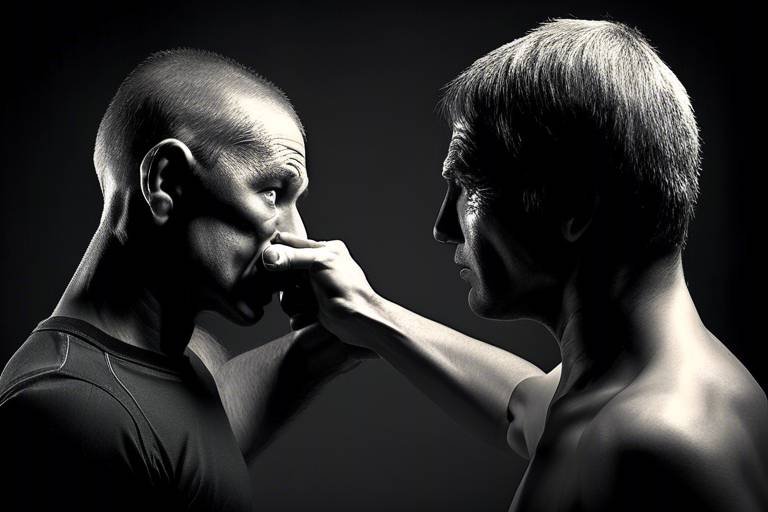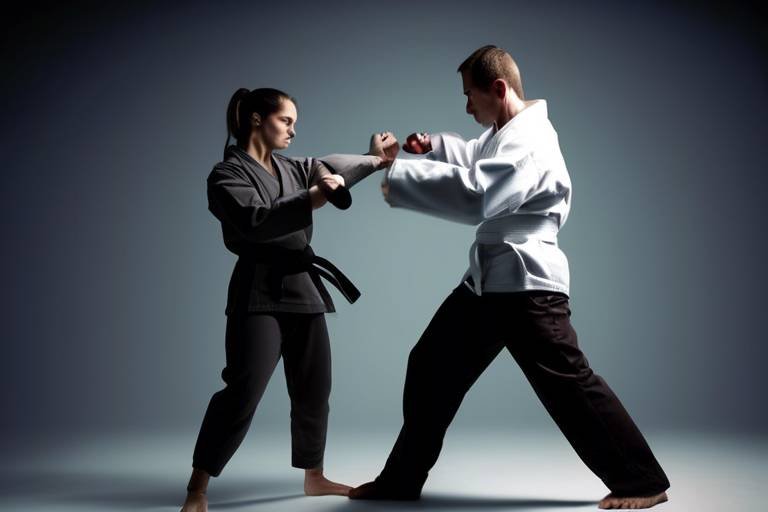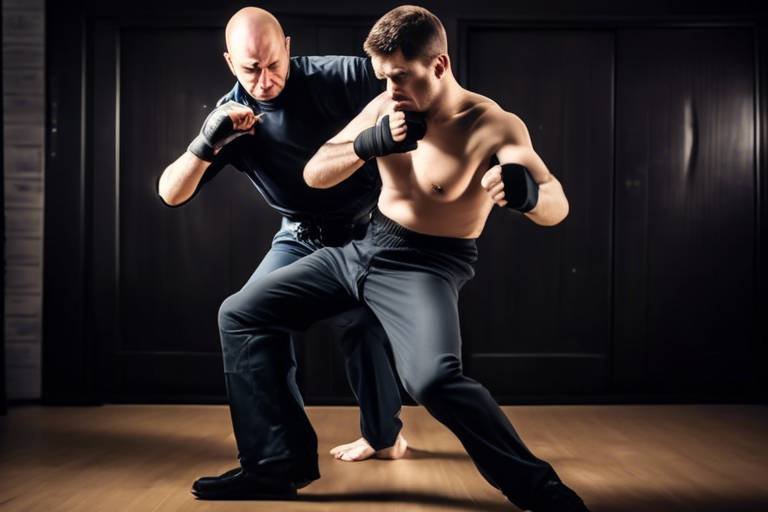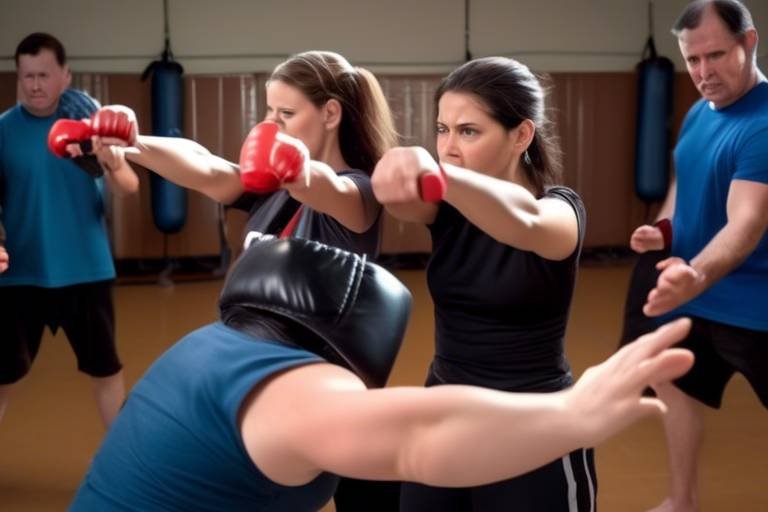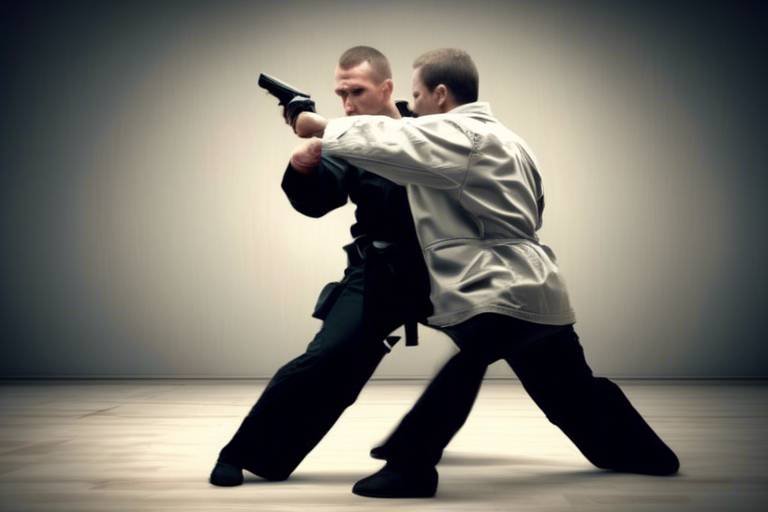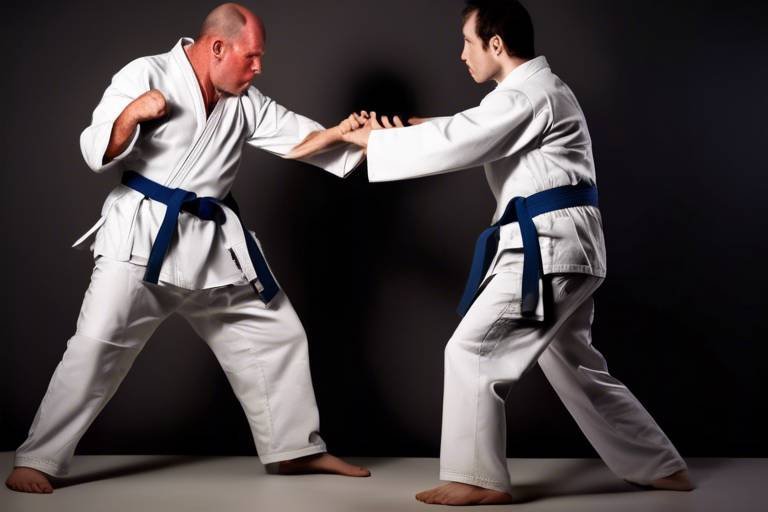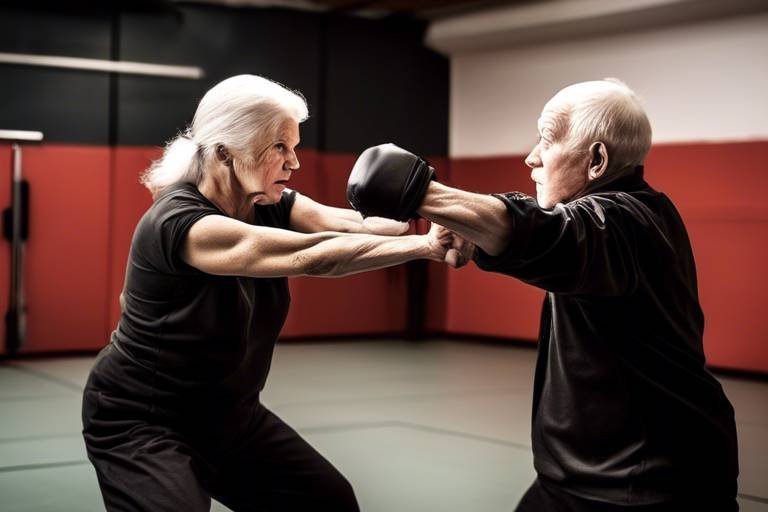Is There a Link between Memory Recall and Self-Defense Techniques?
Have you ever found yourself in a situation where you had to quickly recall a self-defense technique? Maybe you were approached by an aggressive individual, and your mind went blank. This scenario highlights a crucial connection between memory recall and self-defense techniques. Understanding this link can be a game-changer, not just for martial artists but for anyone interested in personal safety. In high-pressure situations, your ability to remember and execute learned techniques can determine the outcome of an encounter.
Imagine walking down a dimly lit street when suddenly, you feel a presence behind you. Your heart races, and your instincts kick in. In that moment, your brain is flooded with adrenaline, and your memory plays a pivotal role. It’s not just about knowing how to throw a punch or escape a hold; it’s about recalling those techniques under stress. This article dives deep into how memory recall impacts self-defense and why enhancing this ability is essential for personal safety.
As we explore the intricate relationship between memory and self-defense, we will uncover the science behind memory recall, the various self-defense techniques available, and how mental preparedness can significantly improve your response in threatening situations. Prepare to be surprised by how interconnected these concepts are and how understanding them can empower you to take control of your safety.
So, let’s embark on this journey together! We’ll break down the science of memory, explore practical self-defense techniques, and discuss mental strategies that can help you stay sharp when it matters most. By the end, you’ll have a clearer picture of the vital link between memory recall and self-defense techniques, and you might just feel a little more confident in your ability to handle unexpected situations.

The Science of Memory Recall
Understanding the mechanisms behind memory recall is crucial for evaluating its role in self-defense. Memory is not just a storage box where we keep our experiences; it’s a dynamic process that shapes our perceptions and responses in real-time. When faced with a threatening situation, the ability to recall relevant information can make the difference between a successful defense and a catastrophic outcome. So, what exactly happens in our brains when we try to remember something? Let's dive into the fascinating world of memory.
Memory can be categorized into different types, primarily short-term and long-term memory. Short-term memory, often referred to as working memory, is like a mental notepad where we hold information temporarily—think of it as a quick reference guide. In contrast, long-term memory is akin to a vast library, where experiences, skills, and knowledge are stored for future use. During high-stress situations, such as a self-defense encounter, our reliance on these memory types becomes critical. The brain processes sensory information and decides what to store based on its significance; hence, the more intense the experience, the more likely it is to be etched into long-term memory.
Interestingly, memory recall is not a straightforward retrieval of facts; it’s more like piecing together a puzzle. When we try to remember something, our brain reconstructs the information based on various cues. This is where the context plays a vital role. For instance, if you’ve trained in self-defense techniques, recalling those moves during a stressful encounter may depend on your ability to remember the environment, the aggressor's actions, and your previous experiences. The more you practice and embed these techniques into your memory, the easier it will be to access them under pressure.
Moreover, stress can significantly affect how we recall memories. High-stress environments can create a fog that clouds our cognitive functions. Under duress, our brain may struggle to access the information stored in our memory, leading to confusion or even a complete mental block. This is why training in self-defense should not only focus on physical techniques but also incorporate mental preparedness. Techniques like visualization and scenario-based training can enhance memory retention, making it easier to recall critical responses when they matter most.
To summarize, the science of memory recall is a complex interplay of various factors, including the type of memory, the context of the situation, and the impact of stress. Understanding these elements can provide valuable insights into how we can improve our self-defense capabilities. By integrating memory-enhancing techniques into training, individuals can better prepare themselves for the unexpected, ensuring that they respond effectively when it counts.

Self-Defense Techniques Overview
When it comes to personal safety, understanding self-defense techniques is not just beneficial; it’s essential. In a world where unpredictability lurks around every corner, knowing how to defend oneself can be the difference between safety and danger. Self-defense techniques encompass a variety of methods, each designed to empower individuals to protect themselves from potential threats. From physical maneuvers to mental strategies, the realm of self-defense is as diverse as it is crucial.
One of the most significant aspects of self-defense is the understanding that it is not merely about physical confrontation. It's about awareness, prevention, and the ability to respond effectively when faced with an aggressive situation. Self-defense techniques can be broadly categorized into several types, including physical techniques, mental preparedness, and situational awareness. Each category plays a vital role in ensuring that individuals are equipped to handle threats when they arise.
Physical techniques form the backbone of self-defense training. They involve specific movements and strategies that can help an individual escape or neutralize an aggressor. These techniques range from striking methods, such as punches and kicks, to grappling techniques that focus on controlling an opponent. It’s important to realize that the effectiveness of these techniques often hinges on the practitioner’s ability to recall and execute them under pressure. This is where the interplay between memory recall and self-defense becomes particularly fascinating.
Moreover, mental preparedness cannot be overlooked. It includes the ability to remain calm and focused during a confrontation, which is crucial for effective decision-making. Training that enhances memory retention can significantly improve an individual's response time and effectiveness in a threatening situation. For instance, by rehearsing scenarios, individuals can better embed the necessary techniques into their memory, making it easier to recall them when it matters most.
In summary, self-defense is a multifaceted discipline that requires both physical skill and mental acuity. The techniques learned can vary widely, but they all share a common goal: to keep individuals safe. As we delve deeper into the specifics of physical techniques, mental preparedness, and the critical role of memory in decision-making, it becomes clear that effective self-defense is as much about the mind as it is about the body.
- What are the most effective self-defense techniques? The most effective techniques vary by situation, but striking and grappling methods are commonly recommended for personal safety.
- How does mental preparedness enhance self-defense? Mental preparedness allows individuals to remain calm and make quick decisions, which is crucial during high-pressure situations.
- Can memory training improve self-defense skills? Yes, memory training can enhance recall of techniques and strategies, making them more accessible during confrontations.

Physical Techniques
When it comes to self-defense, are the backbone of effective personal safety strategies. These techniques are not just about brute strength; they involve a combination of skill, timing, and understanding of human anatomy. Imagine being in a high-pressure situation where every second counts – knowing how to react physically can mean the difference between safety and danger. Physical self-defense techniques can be broadly categorized into various forms, each with its own unique advantages and applications.
First, let's talk about the importance of striking techniques. These techniques are designed to incapacitate or deter an aggressor quickly. Striking methods can include punches, kicks, elbows, and knees, each targeting vulnerable areas of the body. For instance, a well-placed strike to the nose can momentarily disorient an attacker, giving you precious seconds to escape. The effectiveness of striking techniques lies in their ability to create distance between you and your aggressor, allowing for a safer exit from the situation.
Moreover, the mechanics of striking involve not just strength but also precision and speed. Training in these techniques often includes drills that enhance muscle memory, ensuring that when the moment arrives, your body knows exactly what to do without having to think about it. This is where the link to memory recall becomes crucial; the better you can remember and execute these techniques under stress, the more effective you will be.
Next up are grappling techniques, which are essential when the confrontation gets too close for comfort. These techniques focus on controlling an opponent's movement and can be particularly effective against larger aggressors. Grappling includes maneuvers like throws, holds, and joint locks, which can neutralize an attacker's ability to continue their aggression. For example, a well-executed armbar can force an assailant to the ground, providing you with an opportunity to escape.
In grappling, understanding leverage and body mechanics becomes vital. It’s not about overpowering your opponent; it's about using their force against them. This is where the mental aspect of self-defense intertwines with the physical. Knowing how to apply these techniques requires practice and repetition, further emphasizing the importance of memory recall. The more you train, the more these moves become second nature, allowing you to react instinctively in real-life scenarios.
In conclusion, mastering physical self-defense techniques is not just about learning moves; it’s about integrating those moves into your muscle memory and being able to recall them under pressure. As you train, consider the following key points:
- Practice Regularly: Consistency is key to retaining the techniques in your memory.
- Visualize Scenarios: Mental rehearsal can enhance your ability to recall techniques during stressful encounters.
- Focus on Vulnerable Points: Understanding where to strike can maximize the effectiveness of your techniques.
By honing both physical and mental skills, you can significantly improve your self-defense capabilities. Remember, self-defense is not just about fighting back; it's about being prepared and knowing how to respond effectively when it matters most.
Q: Do I need to be physically strong to effectively use self-defense techniques?
A: Not necessarily! Many self-defense techniques rely on technique and leverage rather than brute strength. With proper training, anyone can learn to defend themselves.
Q: How often should I practice self-defense techniques?
A: Regular practice is essential. Aim for at least once a week to keep your skills sharp and your memory fresh.
Q: Can self-defense training help with memory recall?
A: Absolutely! Training not only teaches physical techniques but also enhances cognitive functions related to memory and decision-making under stress.

Striking Techniques
When it comes to self-defense, are crucial for creating distance and disabling an attacker. These techniques encompass a variety of methods designed to incapacitate an aggressor quickly and effectively. Imagine being in a high-pressure situation where every second counts; knowing how to deliver a powerful strike can mean the difference between safety and harm. Striking techniques can be categorized into several types, each with its unique advantages and applications.
Among the most common striking techniques are punches, kicks, and elbow strikes. Each of these methods serves a specific purpose in a self-defense scenario:
- Punches: These are straightforward and can be delivered quickly. A well-placed jab or cross can disrupt an attacker's momentum.
- Kicks: Kicking techniques, such as front kicks or roundhouse kicks, can target vulnerable areas like the knees or groin, providing a strong defensive advantage.
- Elbow Strikes: In close quarters, elbow strikes can be devastating. They are short-range and can generate significant power, making them effective when an attacker is too close for a punch.
Understanding the mechanics behind these strikes is essential. For instance, a powerful punch is not just about brute strength; it involves proper body alignment, weight transfer, and timing. The force generated from your legs and core is what truly delivers power to your strikes. Additionally, practicing these techniques regularly helps build muscle memory, ensuring that when faced with danger, your body responds instinctively.
Moreover, striking techniques are not only about offensive actions; they also play a vital role in defensive maneuvers. For example, a well-timed strike can create an opportunity to escape from a potentially dangerous situation. Think of it as a chess game; every move counts, and the ability to counter an attack can shift the balance in your favor.
In a self-defense scenario, targeting specific areas of an assailant's body can enhance the effectiveness of your strikes. For instance, aiming for sensitive points such as the eyes, nose, or throat can incapacitate an attacker swiftly, allowing you to escape. This is why understanding anatomy can be incredibly beneficial for anyone looking to improve their self-defense skills.
In conclusion, mastering striking techniques requires dedication and practice. It’s not just about knowing how to throw a punch or kick; it’s about understanding when and how to use these techniques effectively. By incorporating striking techniques into your self-defense training, you can significantly increase your chances of staying safe in dangerous situations. Remember, the best self-defense is always about being prepared and knowing how to respond appropriately when the moment arises.
- What are the most effective striking techniques for self-defense? The most effective techniques often include punches, kicks, and elbow strikes, as they can target vulnerable areas of an attacker.
- How can I improve my striking power? Improving your striking power involves practicing proper technique, focusing on body alignment, and engaging your core and legs for force generation.
- Is it necessary to learn striking techniques for self-defense? While not mandatory, learning striking techniques can provide you with valuable tools to protect yourself in dangerous situations.

Grappling Techniques
When it comes to self-defense, grappling techniques are often underestimated, yet they can be incredibly effective in neutralizing a threat. Unlike striking, which focuses on delivering powerful blows, grappling is all about control. Imagine being in a tight situation where your only option is to engage an aggressor up close. This is where grappling techniques shine, allowing you to leverage your opponent's movements against them. It's like a dance, where understanding your partner's steps can lead to a decisive victory.
Grappling encompasses a variety of techniques, including holds, locks, and take-downs. These methods are designed to incapacitate an assailant or create an opportunity to escape. For instance, employing a well-timed throw can not only disorient your attacker but also give you the upper hand to make a quick getaway. In grappling, the goal is to gain a dominant position, which can be achieved through techniques such as:
- Joint Locks: These involve manipulating an opponent's joints to control their movement and inflict pain, making it difficult for them to continue their aggression.
- Chokeholds: A chokehold can render an assailant unconscious if applied correctly, providing a quick resolution to a dangerous encounter.
- Takedowns: Using an opponent's momentum against them, takedowns can effectively bring them to the ground, allowing you to escape or gain control.
One of the most significant advantages of grappling is that it allows individuals of all sizes to defend themselves against larger opponents. By focusing on technique and leverage rather than brute strength, a smaller person can successfully defend themselves. This principle is evident in martial arts such as Brazilian Jiu-Jitsu and Judo, which emphasize using an opponent's weight and balance to your advantage.
Moreover, grappling techniques can be particularly useful in situations where striking may not be appropriate or effective. For example, in crowded spaces where striking could inadvertently harm bystanders, grappling provides a safer alternative. It’s like having a secret weapon; you can control the situation without causing unnecessary chaos.
In addition to physical control, grappling also requires a strong mental component. Practitioners must remain calm and focused, quickly assessing their opponent's movements and adapting their strategy accordingly. This mental agility is crucial, as high-pressure situations can lead to panic and poor decision-making. Thus, grappling not only enhances physical self-defense skills but also sharpens mental acuity.
To summarize, grappling techniques are an essential aspect of self-defense that combines physical skill with mental strategy. They allow individuals to neutralize threats effectively, regardless of size or strength, and are particularly valuable in close-quarters situations. Whether through joint locks, chokeholds, or takedowns, mastering these techniques can significantly enhance personal safety and confidence in self-defense scenarios.
1. What are the benefits of grappling in self-defense?
Grappling techniques provide control over an opponent, allowing for effective defense without relying solely on strength. They are particularly useful in close-quarters situations.
2. Can anyone learn grappling techniques?
Absolutely! Grappling can be learned by individuals of all sizes and skill levels. Many martial arts schools offer classes for beginners.
3. How does mental preparedness affect grappling?
Mental preparedness is crucial in grappling, as it helps practitioners stay calm and focused under pressure, enabling better decision-making during confrontations.
4. Are grappling techniques effective against larger opponents?
Yes, grappling relies on technique and leverage, which allows smaller individuals to defend themselves effectively against larger aggressors.

Mental Preparedness
Mental preparedness is a cornerstone of effective self-defense. Imagine being in a high-pressure situation where every second counts. Your heart races, your palms sweat, and your mind can either become a powerful ally or a debilitating foe. In such moments, the ability to recall training, strategies, and even specific techniques can mean the difference between safety and danger. Being mentally prepared involves not just knowing how to react physically, but also understanding how to manage your thoughts and emotions when faced with a threat.
When we talk about mental preparedness, we’re diving into the realm of cognitive conditioning. This means training your brain to respond in a certain way when confronted with danger. It’s akin to a pilot going through simulations before flying a plane. They don’t just learn how to fly; they practice emergency situations until their reactions become second nature. In the same way, self-defense training should incorporate mental exercises that enhance memory recall and decision-making under stress.
One effective way to enhance mental preparedness is through visualization techniques. By picturing yourself in various scenarios, you can train your brain to react appropriately. For instance, imagine walking down a street and suddenly encountering an aggressive individual. Visualizing your response—whether it’s employing a striking technique, using your environment to your advantage, or de-escalating the situation verbally—can help solidify those responses in your memory. This mental rehearsal can be just as crucial as physical practice.
Moreover, engaging in mindfulness practices can significantly boost your mental readiness. Mindfulness teaches you to stay present and focused, reducing anxiety during stressful situations. It’s like tuning a radio to the right frequency; when you’re calm and centered, your mind can access the necessary recall of techniques more efficiently. Here are a few mindfulness practices that can aid in mental preparedness:
- Deep Breathing: Taking slow, deep breaths can help calm your nervous system.
- Meditation: Regular meditation can improve focus and clarity, making it easier to recall important techniques.
- Positive Affirmations: Repeating positive statements can boost your confidence and mental resilience.
Additionally, participating in scenario-based training can enhance both your physical and mental readiness. In these training sessions, practitioners are placed in realistic self-defense situations where they must apply their skills in real-time. This not only helps in honing physical techniques but also reinforces memory recall under pressure. Think of it as a rehearsal for the unexpected; the more you practice, the more instinctive your responses become.
In conclusion, mental preparedness is a multifaceted approach that combines cognitive training, visualization, mindfulness, and scenario-based practice. By focusing on these elements, you can improve your ability to recall vital information during high-stress situations, ultimately enhancing your effectiveness in self-defense. Remember, it’s not just about knowing how to defend yourself; it’s about being mentally equipped to do so when it matters most.
Q: What is mental preparedness in self-defense?
A: Mental preparedness refers to the cognitive and emotional readiness to respond effectively in high-pressure self-defense situations. It involves training your mind to recall techniques and manage stress.
Q: How can I improve my memory recall for self-defense?
A: You can enhance memory recall through visualization techniques, mindfulness practices, and scenario-based training that simulate real-life situations.
Q: Why is visualization important in self-defense training?
A: Visualization helps train your brain to react appropriately in dangerous situations, reinforcing memory and improving decision-making under stress.
Q: Can mindfulness really help in self-defense?
A: Yes! Mindfulness practices can reduce anxiety, improve focus, and help you stay present, making it easier to recall self-defense techniques when needed.

The Role of Memory in Decision-Making
Memory plays a crucial role in decision-making, especially in high-pressure situations like self-defense encounters. When faced with an unexpected threat, our ability to recall relevant information can be the difference between a successful response and a disastrous one. Think of memory as a mental toolbox; the more tools you have, the better equipped you are to handle whatever comes your way. But how does this toolbox get filled? Through training and experience, we gather valuable memories that inform our choices in critical moments.
During a self-defense scenario, the brain races to retrieve memories of past experiences, techniques learned in training, and even the outcomes of similar situations. This rapid recall is essential because it allows individuals to quickly assess their options and make decisions that could save their lives. For instance, if someone has practiced a specific self-defense technique repeatedly, they are more likely to remember and execute it under stress, rather than freeze or panic. The link between memory and decision-making becomes even clearer when we consider how our brains operate in high-stress environments.
Stress can significantly impact memory recall. In moments of extreme pressure, the body enters a fight-or-flight response, which can lead to a narrowing of focus. While this can help prioritize immediate threats, it can also hinder the ability to remember less critical information. For example, if someone is attacked, they might forget a self-defense technique they’ve practiced countless times simply because their brain is overwhelmed by the situation. This is why training under simulated stress conditions can be incredibly beneficial; it helps to condition the mind to recall important information even when adrenaline is pumping.
Moreover, understanding the types of memory can further illuminate how we make decisions in self-defense. There are two primary types: declarative memory, which involves facts and events, and procedural memory, which is tied to skills and actions. In self-defense, procedural memory is particularly important, as it allows individuals to perform techniques without conscious thought. This is akin to riding a bike; once you learn, you don't have to think about every pedal stroke. Instead, your body just knows what to do, which is vital when every second counts.
Training programs that focus on enhancing memory recall can be invaluable for individuals looking to improve their self-defense skills. Techniques such as mental visualization, repetition, and scenario-based training can help solidify memories related to self-defense techniques. By mentally rehearsing various scenarios, individuals can create strong neural pathways that facilitate quicker recall during real-life encounters. This is where the concept of muscle memory comes into play—your body learns to react instinctively, allowing you to focus on the situation at hand rather than the mechanics of your response.
In summary, memory is not just a passive storage system; it actively influences our decision-making processes during high-stress situations. By understanding how memory works and implementing training strategies that enhance recall, individuals can significantly improve their ability to respond effectively in self-defense scenarios. The brain is a powerful ally when it comes to personal safety, and with the right tools, it can make all the difference in critical moments.
- How can I improve my memory for self-defense techniques? Regular practice and scenario-based training can help enhance memory recall. Mental visualization techniques can also be beneficial.
- What is the impact of stress on memory recall? High-stress situations can impair memory recall, making it crucial to train under simulated stress conditions to improve performance.
- Why is procedural memory important in self-defense? Procedural memory allows individuals to execute self-defense techniques instinctively, which is essential during high-pressure encounters.

Stress and Memory Recall
When the pressure is on, whether it's a looming deadline at work or a potential threat in a self-defense scenario, our brains react in fascinating ways. Stress can be a double-edged sword; it can either sharpen our focus or cloud our judgment. In high-stress situations, such as an encounter with an aggressor, the body releases hormones like adrenaline and cortisol, which can significantly impact memory recall. Imagine standing in front of a lion—your body kicks into survival mode, but this heightened state can also distort your memories of what to do next.
Research shows that while short bursts of stress can enhance certain types of memory—like recalling specific physical techniques learned during training—prolonged or intense stress can lead to memory impairment. This is primarily because stress affects the hippocampus, the brain region responsible for forming new memories. When your heart is racing and your palms are sweaty, the last thing you want is for your brain to freeze up. That's why understanding the relationship between stress and memory recall is crucial for anyone looking to improve their self-defense skills.
In a self-defense situation, you might find yourself needing to remember specific techniques or strategies. Here are some key points to consider:
- Short-Term Memory vs. Long-Term Memory: Under stress, your short-term memory might falter, making it difficult to recall the techniques you practiced. This is why repetition and mental rehearsal during training are vital.
- Decision Fatigue: Stress can lead to decision fatigue, where the ability to make sound choices diminishes. This can result in hesitation or panic, which are not ideal during a self-defense scenario.
- Emotional Memory: Stressful experiences can create strong emotional memories. While this can help you remember the fear of a past encounter, it might not help you recall the appropriate response.
To combat the negative effects of stress on memory recall, it's essential to incorporate stress management techniques into your training regimen. Techniques such as deep breathing, visualization, and even mindfulness can help keep your mind clear and focused. Think of it like training your muscles; just as you would strengthen your physical abilities, you must also work on your mental resilience. Imagine being able to access your training even when your heart is racing—now that’s a game changer!
In summary, while stress can impede memory recall, understanding its effects can empower individuals to train more effectively. By preparing mentally and physically, you can enhance your ability to remember critical self-defense techniques when it matters most. So next time you step into a training session, remember: it’s not just about the physical moves, but also about training your mind to stay sharp under pressure.

Training for Memory Enhancement
When it comes to self-defense, the ability to recall crucial information in the heat of the moment can be the difference between safety and danger. Just imagine being in a high-stress situation where every second counts; your brain is racing, and your heart is pounding. In such moments, having a solid memory can help you remember the techniques you’ve practiced, the escape routes you’ve identified, and even the specific details about your assailant. This is where plays a pivotal role.
Memory enhancement is not just about rote memorization; it’s about creating strong neural pathways that allow for quick recall under pressure. One effective way to boost memory is through repetition. The more you practice self-defense techniques, the more ingrained they become in your memory. This is akin to learning a musical instrument—practice makes perfect. You wouldn’t expect to perform a concerto without hours of practice, right? The same principle applies to self-defense training.
Additionally, visualization techniques can significantly enhance memory recall. By mentally picturing yourself executing self-defense moves or navigating a stressful situation, you create a mental blueprint that your brain can reference when needed. Visualization can be practiced during training sessions or even at home. For example, take a few moments each day to close your eyes and visualize yourself successfully defending against an attack. This technique not only aids memory but also boosts confidence.
Moreover, incorporating mindfulness practices can improve overall cognitive function, including memory. Mindfulness helps in reducing stress and anxiety, which are known to impair memory recall. Techniques such as meditation or focused breathing exercises can clear your mind and enhance your ability to process and retain information. Think of it as decluttering your mental space—when your mind is clear, it’s easier to access the information you need in a critical moment.
Finally, consider engaging in memory training exercises. These can range from simple games that challenge your recall abilities to more structured programs designed specifically for enhancing memory. For instance, you might try:
- Memory card games that require you to match pairs, which can sharpen your recall skills.
- Practicing with a partner where you simulate self-defense scenarios and recall specific techniques during the exercise.
- Using apps designed for memory enhancement that offer exercises tailored to improve cognitive functions.
In summary, training for memory enhancement is not just an optional extra; it’s a crucial component of effective self-defense. By incorporating repetition, visualization, mindfulness, and targeted memory exercises into your training regimen, you can significantly improve your ability to recall vital information in high-stress situations. This not only enhances your self-defense capabilities but also empowers you to feel more confident and prepared for whatever life throws your way.
Q: How does stress affect memory recall during self-defense situations?
A: High-stress environments can impair memory recall, making it difficult to remember techniques or escape routes. Training under simulated stress can help improve recall.
Q: What are some effective memory enhancement techniques?
A: Techniques include repetition, visualization, mindfulness practices, and engaging in memory training exercises.
Q: Can memory training improve my overall self-defense skills?
A: Yes, improved memory can enhance your ability to recall techniques quickly and effectively, which is crucial in self-defense scenarios.
Frequently Asked Questions
- What is the connection between memory recall and self-defense techniques?
Memory recall plays a crucial role in self-defense, as it influences how individuals respond to threats. When faced with high-stress situations, the ability to quickly recall self-defense techniques can be the difference between effectively defending oneself and panicking. The better your memory, the more instinctively you can react.
- How does stress affect memory recall during self-defense situations?
Stress can significantly impair memory recall. In high-pressure environments, the brain may struggle to access stored information, making it harder to remember self-defense techniques. This can lead to hesitation or confusion, emphasizing the need for mental preparedness and training that simulates stressful scenarios.
- Can memory training improve self-defense skills?
Absolutely! Memory training can enhance recall and decision-making skills during self-defense situations. Techniques such as visualization, repetition, and mental exercises can improve how quickly and accurately you remember self-defense moves when it matters most.
- What types of self-defense techniques should I focus on?
It's beneficial to learn a variety of self-defense techniques, including striking and grappling methods. Striking techniques can help you fend off an attacker, while grappling techniques are essential for close-quarters combat. A well-rounded approach ensures you're prepared for different scenarios.
- Is physical training enough for self-defense?
While physical training is important, mental preparedness is equally crucial. Understanding the psychological aspects of self-defense and practicing memory recall under pressure can greatly enhance your effectiveness in real-life situations. Combining both physical and mental training is key.
- How can I practice memory recall for self-defense?
Practicing memory recall can involve various techniques, such as role-playing scenarios, using flashcards for techniques, or engaging in drills that require quick decision-making. Regular practice in a controlled environment can help you retain information and respond effectively in real situations.

